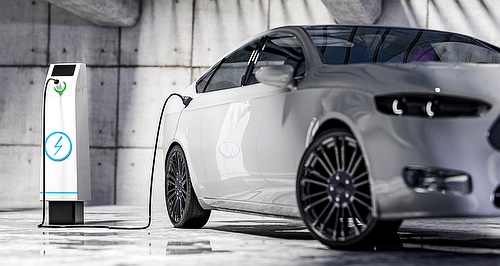Make / Model Search
News - General News - GovernmentPalaszczuk government announces $3000 EV planDetails of Queensland’s $55m Zero Emission Vehicle strategy unveiled, FCAI not convinced17 Mar 2022 By MATT BROGAN THE Annastacia Palaszczuk-led Queensland government has announced details of a $55-million package it says will help drive the state’s commitment of net-zero emissions by the year 2050.
Including a $3000 incentive for buyers of new electric vehicles priced up to $58,000 (and capped at $45 million), the Queensland Zero Emission Vehicle Strategy 2022-2032 also outlines plans for a further $10 million to extend the state’s electric-vehicle charging network, which is in addition to its ongoing commitment to install a zero-emissions bus fleet in the state from 2025 onward.
Premier Palaszczuk said the investment would make EV ownership more affordable for Queensland residents.
“We are going to make the cost of buying electric cars just that little bit cheaper,” said Ms Palaszczuk. “My government will provide a $3000 subsidy for anyone buying an electric vehicle up to the value of $58,000.”
Queensland transport and main roads minister Mark Bailey echoed Ms Palaszczuk’s remarks, adding that the state’s drive toward a low-emissions future was an important step in recognising a fundamental shift in the Australian transport system.
“This (announcement) will see Queenslanders get money back for switching to electric vehicles, and the Palaszczuk government build more charging infrastructure across the Sunshine State.
“We revolutionised electric-vehicle travel through the Queensland Electric Super Highway, which is being expanded to almost 3800km, and now Queenslanders will have even more charging stations to use.
“Not only does this encourage people to buy electric vehicles… It gives the automotive industry confidence to set up shop in Queensland – this strategy signals a fundamental shift in our transport system.”
Mr Bailey said Queensland was already reaping the benefits from the Palaszczuk government’s commitment that, by 2025, every new urban bus added to the SEQ fleet will be a zero-emission vehicle, with local manufacturers, including Bustech and Volgren, setting up shop in the state.
Energy, renewables, and hydrogen minister Mick de Brenni said the strategy would support more Queenslanders to contribute to the reduction in transport emissions, suggesting residents will also save “millions” of dollars in the fuel spent to power the state government’s vehicle fleet.
“As a government (are) taking direct action by supercharging our government fleet, QFleet, to become electric, going EV-first for all new vehicles where there is a suitable EV option,” said Mr de Brenni.
“Transforming the QFleet will save Queenslanders millions in fuel costs, but most significantly, when they have done their service with frontline workers – our nurses, community carers and educators – these high quality, fully serviced, usually low-kilometre used vehicles will be available for Queenslanders at highly affordable prices.
“That will deliver a clear signal and pipeline to car manufacturers, battery and minerals manufacturers and charging infrastructure manufacturers that Queensland is the place to grow their business and continue to build on our state’s successful jobs and economic results.”
The Federal Chamber of Automotive Industries (FCAI) cautiously welcomed the Queensland government’s announcement.
The FCAI said the strategy would provide opportunities to own an electric vehicle to more Queensland families and road users, but added that it was “perplexed” by figures that suggest the state was targeting 100 per cent zero-emission new passenger vehicle sales by 2036.
“The FCAI believes the (Palaszczuk) government’s continued focus on developing EV recharging infrastructure and fleets is vital in supporting the penetration of EVs into the Queensland market,” said FCAI CEO Tony Weber.
“(However), the primary policy objective is to reduce CO2 emissions and our pathway to this objective in the transport sector needs to be a holistic one – electric vehicles alone will not achieve this in Australia.
“The pathway to reducing emissions through to the mid-2030s will rely on a range of low-emission technologies that include plug-in hybrid, hybrid, and even highly efficient internal combustion engines in addition to pure EVs.
“Improvements in fuel quality and the introduction of a broad-based and nationally consistent Road User Charge scheme, as well as a vehicle-emissions target, are all needed to bring the best low and zero emissions technology to Australia. “We look forward to working with governments at all levels to send these policy signals, which will be vital in achieving our emission reduction across the light vehicle fleet,” he added.  Read more2nd of March 2022  Viva Energy to build hydrogen station in GeelongAustralia’s first publicly accessible commercial hydrogen refuelling station gets the green light1st of March 2022  EVs of interest to Australian policeTrials of electric police cars in the US inspire thought from Aussie law enforcement22nd of February 2022  OEMs welcome cash boost for clean fleetsFuture Fuels Fund pumps $127.9m into helping fleets transition to cleaner vehicles |
Click to shareGeneral News articlesResearch General News Motor industry news |











Facebook Twitter Instagram